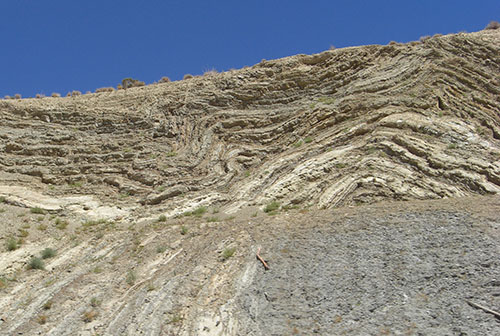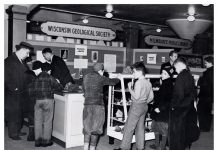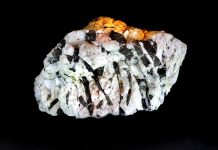
By Jim Brace-Thompson
Portions of our continents are stable, and the earth seldom moves under our feet. But in places like my home state of California, situated along the edge of two tectonic plates (the North American and Pacific plates), the earth is anything but stable. Earthquakes are a daily occurrence. (Even as I write this from my home in Ventura, California, I am moving imperceptibly northward on the Pacific Plate.)
Most such earthquakes are small and undetected except by ultra-sensitive seismometers. But others unleash enough energy to level entire cities, such as earthquakes generated by the world-famous San Andreas Fault not far from my home.
Fault Finds
Several kinds of faults generate earthquakes, such as normal, thrust and strike-slip (like the San Andreas) faults. You can construct 3D models of these faults and other earthquake structures with paper or cardstock by going to the following website to get templates: www.conservation.ca.gov/cgs/information/Pages/3d_papermodels.aspx.

You can also make models with stacked layers of Play-Doh of different colors. Stack the Play-Doh and slice it at an angle. Slide two blocks past one another or push them together to see the results, then think about the underlying geologic forces and structures that cause earthquakes of different sorts and the associated effects.
With the internet, everyone can help advance the science of earthquake monitoring. The U.S. Geological Survey allows folks to go online and share information about the effects of any earthquake they experience to create a map of shaking intensities and damage. Check it out on the page called “Did You Feel It?” (https://earthquake.usgs.gov/data/dyfi/). On it, you’ll be asked to rate earthquakes by answering such question as whether only dishes rattled or if heavy furniture overturned.
Here’s your chance to be an earthquake scientist!
Author: Jim Brace-Thompson
 Founder and overseer of the AFMS Badge Program for kids.
Founder and overseer of the AFMS Badge Program for kids.
He’s also an inductee of the National Rockhound & Lapidary Hall of Fame within the Education Category.














